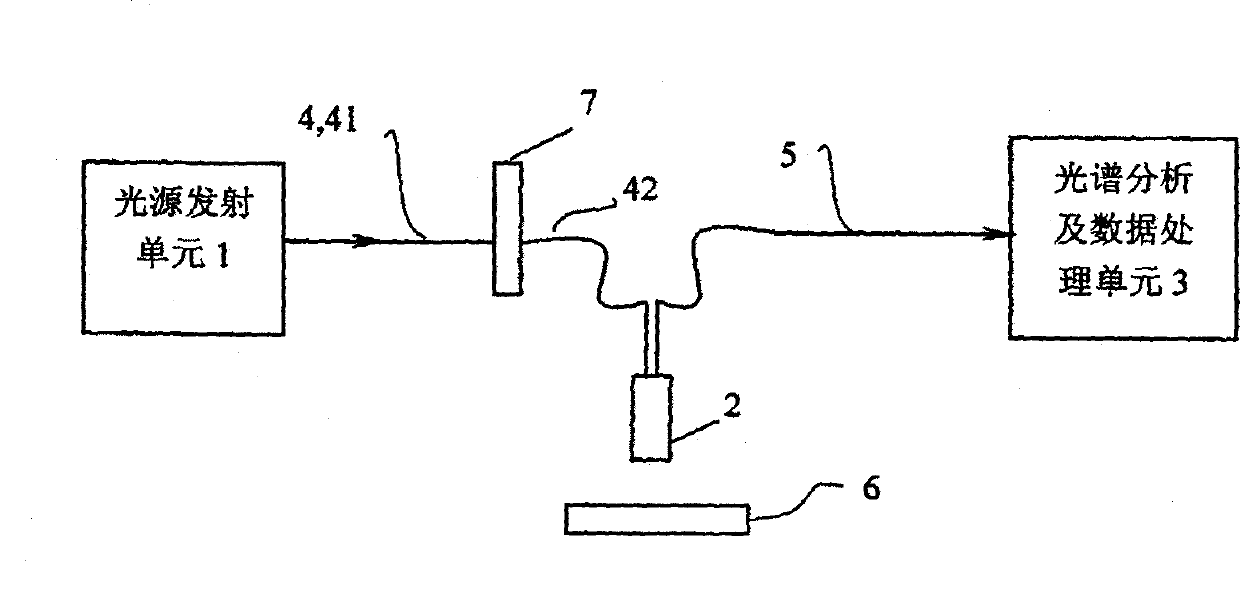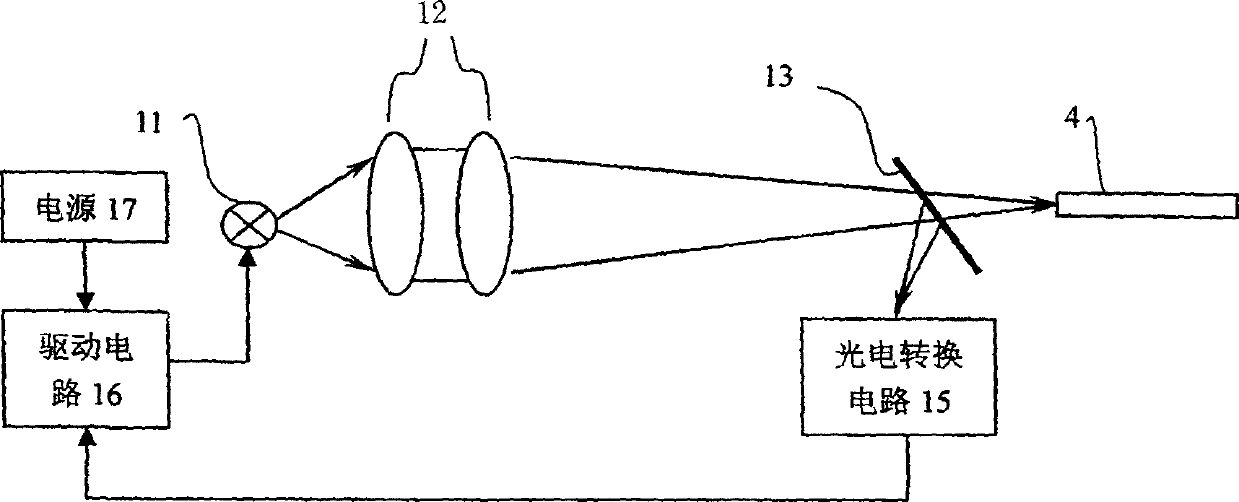Optical detection device and working method for tissue of living body
A living tissue and optical detection technology, applied in medical science, diagnostic recording/measurement, diagnosis, etc., can solve problems such as inability to accurately detect tumor lesions in living tissue, lagging electrical signal control feedback, and inability to obtain diffuse reflectance spectra
- Summary
- Abstract
- Description
- Claims
- Application Information
AI Technical Summary
Problems solved by technology
Method used
Image
Examples
Embodiment 1
[0049] (Example 1. Optical detection device for living body tissue)
[0050] see figure 1 , The living body tissue optical detection device of this embodiment has a main detection device and a diffuse reflection plate 6 independent of the main detection device. The main detection device includes a main detection main device body; the main detection main device main body has a light source transmitting unit 1, an optical fiber probe 2, a spectrum analysis and data processing unit 3, a transmitting optical fiber 4, a receiving optical fiber 5, and an optical switch 7.
[0051] The light source emitting unit 1 is a device that emits light in the wavelength range of 400 to 1000 nanometers when in use (the light emitted in this embodiment has a continuous white light spectrum when used, and its wavelength bands are visible light and near-infrared wavelengths, and can also choose to emit continuous visible light. Light source emission unit 1, or alternatively select the light source em...
Embodiment 2
[0064] (Example 2. Optical detection device for living tissue)
[0065] see Figure 7 , Figure 4-2 with Figure 5-2 , The rest is the same as embodiment 1, the difference is: in this embodiment, the transmitting fiber 4 is changed to a single fiber, the receiving fiber 5 is divided into two sections, and the front section 51 of the receiving fiber 5 is a three-fiber Optical fiber bundle (in other embodiments, it can be any possible value greater than three, such as 6, 10, 20, etc., or two, and the number of branches at the branch end 72 of the corresponding optical switch 7 is not less than that of the optical fiber The number of the optical fiber 5), the rear section 52 of the receiving optical fiber 5 is a single optical fiber. The number of optical switches 7 is still 1.
[0066] see Figure 4-2 and Figure 5-2 In this embodiment, the front end of the transmitting optical fiber 4 is connected to the light source output end of the light source transmitting unit 1; the rear end ...
Embodiment 3
[0068] (Embodiment 3, optical detection device for living tissue)
[0069] see Figure 8 , Figure 4-3 and Figure 5-3 , The rest is the same as embodiment 1, the difference is: the receiving optical fiber 5 is divided into front and rear sections, the front section 51 of the receiving optical fiber 5 is an optical fiber bundle with two optical fibers, and the rear section 52 of the receiving optical fiber 5 is a single optical fiber . The number of optical switches 7 is 2, and the first optical switch 7 is arranged in series by its optical port between the rear end of the optical fiber in the front section 41 of the emission fiber 4 and the front end of each optical fiber in the rear section 42 of the emission fiber 4, The second optical switch 7 is arranged in series with its optical port between the rear end of each optical fiber in the front section 51 of the receiving optical fiber 5 and the front end of the optical fiber in the rear section 52 of the receiving optical fiber ...
PUM
 Login to View More
Login to View More Abstract
Description
Claims
Application Information
 Login to View More
Login to View More - R&D
- Intellectual Property
- Life Sciences
- Materials
- Tech Scout
- Unparalleled Data Quality
- Higher Quality Content
- 60% Fewer Hallucinations
Browse by: Latest US Patents, China's latest patents, Technical Efficacy Thesaurus, Application Domain, Technology Topic, Popular Technical Reports.
© 2025 PatSnap. All rights reserved.Legal|Privacy policy|Modern Slavery Act Transparency Statement|Sitemap|About US| Contact US: help@patsnap.com



